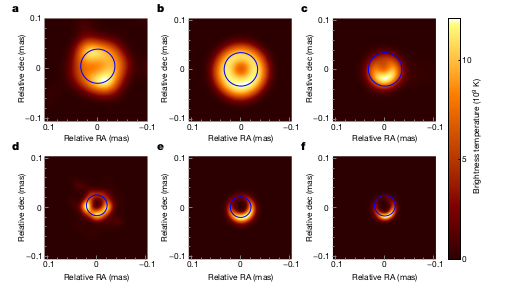Just what the universe needs right now: A black hole with wind
Gusts associated with M87 accretion flow surprises scientists peering into massive ring-like structure
Scientists have observed larger ring-like structures around the supermassive black hole at the center of galaxy M87 than when it famously became the subject of a photoshoot in 2019.
The study, published in the science journal Nature today, also reveals the influence of wind on the black hole's accretion jets – emitted by matter falling into the void – and could improve our understanding of the properties of black holes, the researchers said.
Cosmologists have long supposed the energetic outflows exist around black holes at the center of most large galaxies and improving our understanding of them could help form models of the physics of active galactic nuclei (AGNs), the squished-in zone in the middle of galaxies where all the action is. AGNs are more luminous than the rest of the galaxy because of the jets of light and energy emitted by dust and gas falling into a black hole in a process called accretion.
The supermassive black hole at the center of galaxy M87 — a massive galaxy in the Virgo cluster — became subject of a media frenzy in 2019 when it featured in the first image of a halo around such a giant gravitational void. Scientists running the Event Horizon Telescope (EHT), an array of eight ground-based radio telescopes around the world, captured the image. It was later sharpened up in 2021 to reveal how its magnetic field polarizes light.
- Balloon-borne telescope returns first photos in search for dark matter
- Astronomers clock runaway black hole leaving trail of fresh stars
- Bright light from black holes found to be caused by particle shock waves
- This ancient quasar may be the remains of the first-gen star that started us all
Now Ru-Sen Lu, researcher at the Chinese Academy of Sciences, Shanghai, and a team of collaborators large enough to fill a small theater, claim to have developed new high-resolution images of M87 obtained in 2018 taken at an electron-magnetic wavelength of 3.5mm, rather than the 1.3mm data recorded in 2017 for the 2019 image.

The ring-like structure observed at 3.5 mm (images a-c) differs from the one seen at 1.3 mm (images d-f). Lu et al, Nature
The new data came from the Global Millimeter VLBI Array (GMVA), which is made up of 16 telescopes in Europe, the USA and Korea, together with evidence from the Atacama Large Millimeter/submillimeter Array (ALMA) in Chile and the Greenland Telescope (GLT).
To start with, the ring surrounding the black hole was found to be around half as much larger than the 2019 study revealed, suggesting there is much greater accretion flow into the black hole than earlier observations suggest.
"This larger and thicker ring indicates a substantial contribution from the accretion flow with absorption effects, in addition to the gravitationally lensed ring-like emission. The images show that the edge-brightened jet connects to the accretion flow of the black hole," the study said.
Also supported by computational models, the study suggests the effects of wind associated with the accretion flow. The wind is driven by a combination of centrifugal force, gas, and magnetic pressure on the flow, the study said. ®
